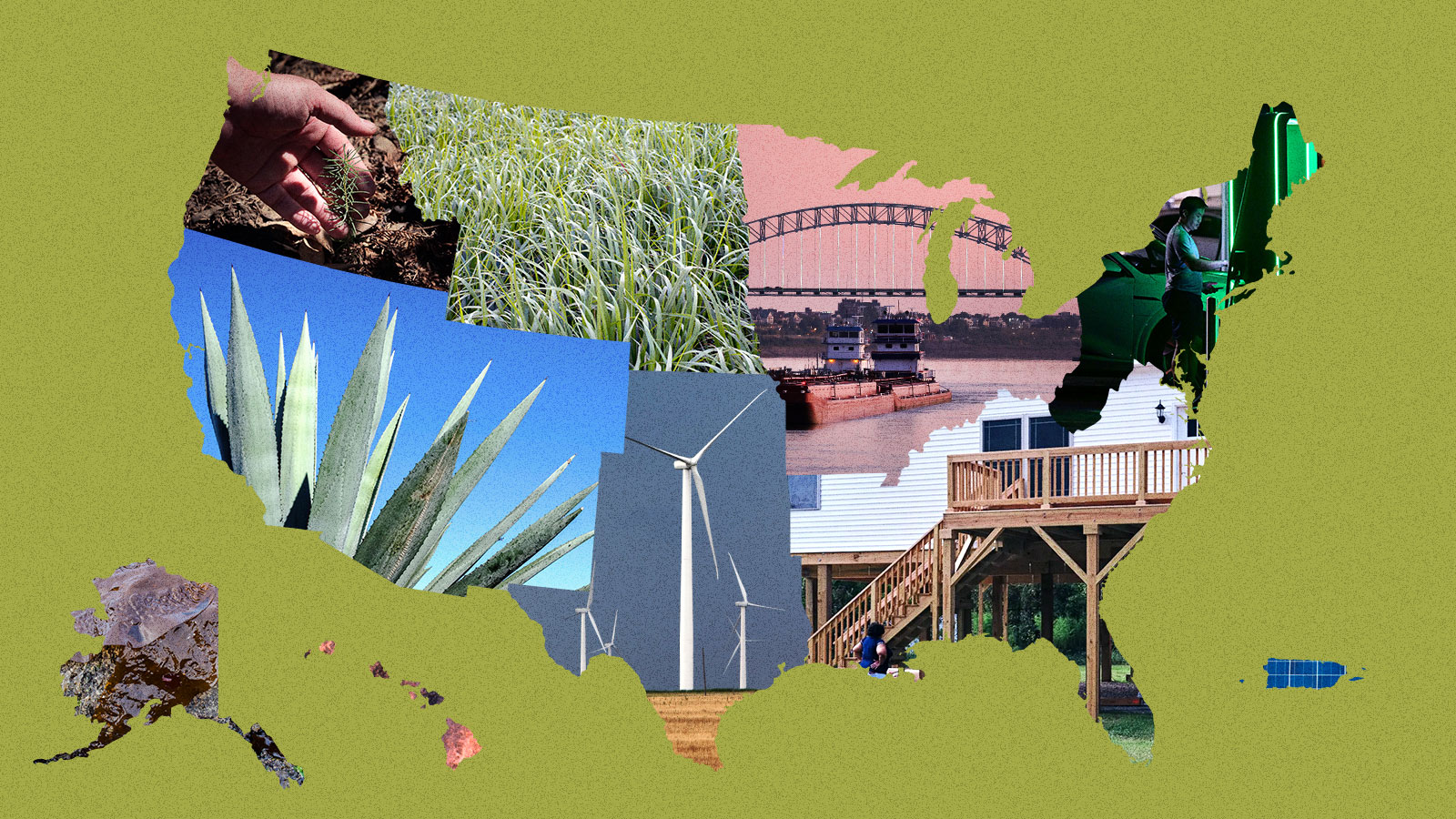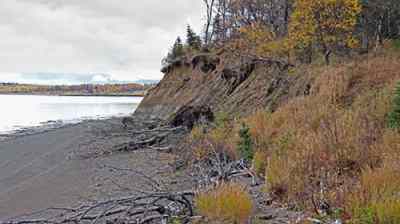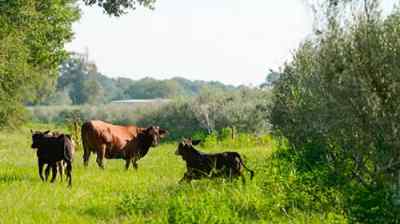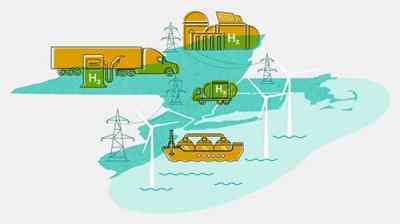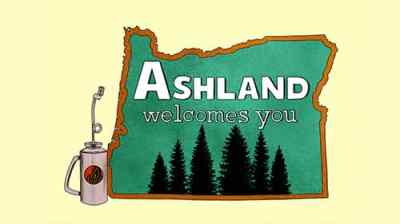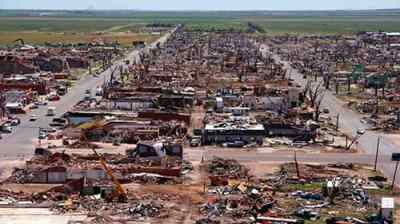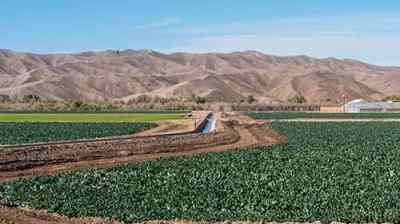On Tuesday, the United States government published the Fifth National Climate Assessment — an exhaustive summary of the leading research on climate change and how it affects life in every part of the country. It may come as no surprise that its findings are dire. Impacts that we are already experiencing today, like the rate of temperature increase, frequent and extreme wildfires, and ongoing drought in the West, are “unprecedented for thousands of years.” These changes will only worsen for as long as society continues to burn fossil fuels, and for some time after.
But the report also offers reason for hope. “The takeaway from this assessment, the takeaway from all of our collective work on climate, should not be doom and despair,” Ali Zaidi, the White House national climate adviser, said in a press call. Instead, he and others stressed, the message should be one of action and possibility.
As the crisis has intensified, so have efforts to mitigate it. States, cities, businesses, and organizations across the country are taking increasingly large steps to reduce emissions — and those efforts are aided by the falling costs of renewable energy and other decarbonizing technologies. The report notes that the cost of solar energy has fallen 90 percent in the last decade, and the cost of wind power has dropped 70 percent. Between 2005 and 2019, greenhouse gas emissions in the U.S. decreased by 12 percent. Still, emissions must decrease far more rapidly than that by 2050 to keep us in line with international climate goals.
In the meantime, communities across the country are taking the necessary steps to adapt to climate impacts, and in many cases, doing so in ways that address inequities.
Since the last National Climate Assessment in 2018, scientific advancements — increased confidence in the links between climate change and weather disasters, for example, and the connections between climate and environmental justice — have improved our understanding of the crisis and bolstered awareness. In the press call, Biden administration officials highlighted how the climate conversation has advanced in the last five years. That’s partly the result of more Americans feeling the effects of climate change in their daily lives. It’s no longer a question of whether the crisis is “real,” but rather what must be done to respond to it, and prevent as much harm as possible.
Grist writers from across the U.S. dove into the report to highlight some key solutions and adaptation strategies happening in each region. Here they are.

Alaska
Most Alaskans live near the ocean, and many depend on it for food and income. That’s one reason warming and acidifying seas pose so great a threat to their ways of life. Fewer salmon, cod, and shellfish means less food and fewer jobs.
Fortunately, the ocean is also where many people are finding solutions. The Chugach Regional Resources Commission, an organization made up of seven Indigenous governments in south-central Alaska, is leading several projects aimed at helping coastal communities adapt to the changing ocean.
One solution involves seeding beaches with clams — an important traditional food source for Native communities. Climate pressures like ocean acidification have made it harder for the mollusks to build and maintain shells. The Chugach commission raises clams, oysters, geoducks, cockles, and other coastal critters at the state’s only shellfish hatchery. It also oversees weekly testing for toxic algae blooms, which infect shellfish and have become a growing public health hazard fueled by marine heat waves.
Alaska has also become a hub for kelp farming, which the report says can help suck up carbon, reduce acidification, and create jobs. One farm in the south-central region of the state grows oysters and mussels alongside kelp. Diversification, whether it’s on a single farm or across a local economy, can make towns more resilient, the report says.
That applies on land, too. Some communities have taken up agriculture to offset the loss of traditional food sources, like bird eggs that erosion has made harder to find. The warming climate may extend the growing season and open the door to cultivating new kinds of crops. In the Native Village of Port Heiden in southwest Alaska, residents started a farm to raise reindeer, poultry, and pigs, and the Knik Tribe in south-central Alaska is growing potatoes.
— Max Graham

Hawaiʻi and Pacific Islands
Hawaiʻi, Guam, American Sāmoa, the Northern Mariana Islands, the Republic of Palau, the Federated States of Micronesia, the Republic of the Marshall Islands
For hundreds of years in the Mariana Islands, Indigenous CHamoru people built homes on top of limestone pillars as high as 25 feet to protect against coastal inundation. This architectural feat, known as the latte stone, ended with Spanish colonization, but remains one of many examples of how Pacific peoples have innovated throughout history to adapt to their environments.
The sea level was at least 3.3 feet higher between 2,000 and 4,000 years ago, when many of the first people crossed the Pacific to the Marianas and other archipelagos. With the ocean again rising, and intense storms, coastal erosion, and hotter days growing more problematic, the report highlights how Indigenous communities in the Pacific are drawing on their knowledge to address the pressures of climate change.
One example is the revitalization of traditional food production. Renewed interest in cultivating native crops like taro helps restore local ecosystems and strengthen their resilience to threats like wildfires that feast on dry invasive grasses. Reviving Native farming systems can also help reduce the islands’ dependance on imported foods.
In Hawaiʻi, some advocates are exploring the possibility of a zoning category for “traditional lands” that would support sustainable housing communities along with culturally rooted farming and fishing. University of Hawaiʻi scholars have analyzed how traditional crops like breadfruit might fare in a hotter climate, and found the staple crop may remain resilient.
In addition to embracing traditional knowledge, Pacific communities are emerging as leaders in the energy transition. Both Hawaiʻi and Guam have committed to using 100 percent renewable energy by 2045. The Hawaiian island of Kauaʻi is occasionally powered only by clean energy during the day, and in 2021 nearly 70 percent of the island was powered by renewable energy.
— Anita Hofschneider

Midwest
Illinois, Indiana, Iowa, Michigan, Minnesota, Missouri, Ohio, Wisconsin
Home to the Great Lakes and 500,000 miles of rivers and streams, the Midwest is blessed with water. But it’s possible to have too much of a good thing, as shown by the heavy rains brought by climate change. Flooding has caused up to $109 billion in damage to the region since the 1980s, with worse to come.
Remedies are at hand, according to the report, from repairing old dams to restoring natural floodplains. Wetlands, for example, are a cost-effective way to reduce flooding. The sponge-like ecosystems that once protected much of the Midwest were drained for development — Illinois and Ohio, for instance, have lost more than 90 percent of their wetlands in the past two centuries. Efforts to restore them are underway in both states.
The Mississippi, Missouri, and Ohio rivers are “critical lifelines” for transporting goods across the country, the report says. But swings in precipitation are jeopardizing locks and dams and leading to costly shipping delays of food and fertilizer. For the Ohio River, which carries 35 percent of the country’s water-based transport, the U.S. Army Corps of Engineers has devised a comprehensive plan to update aging infrastructure.
With dam failures and overflows from combined sewer and stormwater systems common, there’s more work to do. Many Midwest cities collect stormwater and sewage in pipes that can’t handle the volume of rain coursing through. The Milwaukee Metropolitan Sewerage District has spent $4 billion to fix this with a system of deep tunnels, stopping more than 145 billion gallons of pollution from spilling into Lake Michigan since the early 1990s.
The report suggests that retreating from repeatedly flooded areas — a strategy normally reserved for coastal towns — has already proven useful in the middle of the country. The town of Valmeyer, Illinois, moved uphill after a devastating flood along the Mississippi in 1993. It’s been called an early model of climate resilience.
— Kate Yoder
This section has been updated to remove a mention that barge transport is a low-carbon option, since the science isn’t yet conclusive.

Northeast
Connecticut, Delaware, Maine, Maryland, Massachusetts, New Hampshire, New Jersey, New York, Pennsylvania, Rhode Island, Vermont, Washington, D.C., West Virginia
Large and deadly storms, like Superstorm Sandy in 2012, have hastened efforts to bolster infrastructure in the Northeast in preparation for the more severe impacts of climate change. The region is also home to a cadre of progressive governors who have championed climate action.
“Eight states in the region (Maine, New Hampshire, Vermont, Massachusetts, Rhode Island, Connecticut, New York, and New Jersey) have laws requiring emissions reductions of at least 80 percent by 2050,” the report says, a goal these states aim to achieve by restricting the use of fossil fuels and encouraging the growth of green technologies. Some go even further. Massachusetts, for example, will ban the sale of new internal combustion cars after 2035. A Connecticut law empowers cities to create their own stormwater management plans. Maine encourages climate education in public schools.
Some of the most aggressive efforts to adapt to climate change are being led by the region’s federally recognized tribes. Last year, the Mi’kmaq Nation in northern Maine approved the Thirteen Moons Climate Adaptation Plan, which highlights the dangers warming poses to the traditional Mi’kmaq way of life. Maine’s winters have grown two weeks shorter as the state’s average temperature has increased roughly 3 degrees Fahrenheit since the 1800s. “Plants and animals are ‘behaving wrongly,’ that plan says, citing species like balsam fir trees and green crabs moving north to cooler climes.
While most non-Indigenous populations across the U.S. have been slow to acknowledge the threats a changing climate poses to daily life, the Mi’kmaq Nation is clear-eyed about which traditions can be preserved and which must be adapted. Its plan recommends consuming more invasive plants, making warming and cooling centers accessible during extreme weather events, and determining whether to preserve “at all costs” the black ash trees that are used for basket-making — or pivot to alternatives.
— Zoya Teirstein

Northern Great Plains
Montana, Nebraska, North Dakota, South Dakota, Wyoming
The northern Great Plains contain huge swaths of grasslands, home to iconic — but threatened — species like American bison, greater sage grouse, and black-footed ferrets. Over centuries, millions of acres have been developed or converted to crops. Restoring prairies and the wildlife they support could be a key strategy to reverse some of the environmental and climate challenges associated with agriculture, while boosting the region’s economy, the report says.
Drier soils and limited surface water caused by climate change make it ever-harder to sustain thirsty crops like wheat and alfalfa. According to the report, converting farms to grasslands could help reduce water use, sequester carbon, and slow erosion. The switch to prairie grasses could be an especially viable solution on farmland that has already become less productive.
The report highlights one farm near South Shore, South Dakota, that grew switchgrass — a drought-resistant, native perennial that requires little fertilizer — at a higher profit than corn. Switchgrass can be burned to generate electricity, or turned into products like ethanol fuel or biochar, a charcoal-like substance that can be used to improve soil. But upping biofuel production isn’t without its drawbacks; producing and burning ethanol is at least 24 percent more carbon-intensive than gasoline, according to one study. And the biochar industry still faces hurdles in scaling up production and demand.
Groups are also working to bring back native wildlife, like buffalo, a keystone species deeply tied to the cultures of many tribal nations in the northern Great Plains. Efforts to return the majestic ruminants are being led by groups like the InterTribal Buffalo Council, which has helped reintroduce them on nearly 1 million acres of tribal land.
— Akielly Hu

Northwest
Idaho, Oregon, Washington
Washington, Oregon, and Idaho are famous for their towering evergreens, an appeal for hikers, loggers, and Twilight fans. But the region’s lush forests, among the most carbon-dense in the world, are increasingly going up in flames, endangering homes and choking communities with smoke. A couple of decades from now, the risk of wildfires burning more than 12,000 acres will increase more than fourfold for parts of the region.
It’s a little counterintuitive for environmentalists, but the report says that tree thinning and other methods of removing vegetation could lessen the risk of severe fires in drier areas. Forests could also benefit from reintroducing controlled burns and incorporating Indigenous knowledge into fire management. Combining time-tested strategies with new technology, the Confederated Tribes of the Colville Reservation are using drones to monitor their forests. In Ashland, Oregon, loggers and environmentalists put aside their differences to protect their town by clearing brush, felling trees, and instituting regular maintenance burns.
Forests with more diversity — with varied amounts of shade tolerance and bark thickness, and different sizes of seeds and leaves — can better survive the changing climate, according to the report. It also recommends that people can help forests through “assisted migration,” or relocating species from where they grow now to where they are more likely to thrive in the future. On their own, most plants can’t migrate fast enough to outrun the changing climate.
With the Northwest facing record die-offs of its iconic evergreens (which some scientists dubbed “fir-mageddon”), there’s a need for trees that can face harsh conditions. The Forest Service is experimenting with planting Douglas fir seedlings from Oregon in the cooler air of Washington’s Gifford Pinchot National Forest, southwest of Mount Rainier. There’s also an organized effort in the Seattle area to plant coastal redwoods and giant sequoias — prized, drought-tolerant species from California that are in danger as their native environment warms.
— Kate Yoder

Southeast
Alabama, Arkansas, Florida, Georgia, Kentucky, Louisiana, Mississippi, North Carolina, South Carolina, Tennessee, Virginia
In its chapter on the Southeast, the report zeroes in on the tremendous risks facing the region’s cities, which are in a state of “unconstrained exurban and suburban sprawl.” Hurricanes and more intense rainstorms will destroy billions of dollars of property in cities from Miami to Atlanta, and local governments will have to retrofit everything from power grids to water treatment plants to protect residents from the blackouts and disease outbreaks that can follow big storms.
The best way to eliminate this risk, though, is to unwind the decades of construction that created it. The federal government has already started doing this by paying local governments to buy out and relocate communities in flood-prone areas. Officials in states like North Carolina have purchased thousands of vulnerable homes and knocked them down, giving residents money to move to higher ground. This strategy, known as managed retreat, will likely expand — but must be paired with corresponding restrictions on development. According to one study, for every home North Carolina bought out between 1996 and 2017, 10 more homes were built in the floodplain.
Furthermore, these programs have well-documented equity issues: The report cites the historic Black town of Princeville, North Carolina, as an example of a successful buyout program, but Grist has documented the townʻs long and complicated journey to recovery. Even so, most experts agree that buyouts are the cheapest and best way to reduce future flood damages and save lives. A better funded and more forward-looking program, like New Jersey’s Blue Acres initiative, would go a long way toward reversing the South’s long trend of unsustainable development. In that program, officials hold counseling sessions with potential participants, and provide money to help defray moving expenses.
— Jake Bittle

Southern Great Plains
Kansas, Oklahoma, Texas
Many cities in the southern Great Plains have confronted the challenge of rebuilding after tornadoes and floods — most notably Houston, which saw three “100-year” floods between 2015 and 2017. In most cases, however, local leaders have chosen to respond by rebuilding the status quo.
Greensburg, Kansas, chose a different path. The prairie town of 1,400 was struck by a powerful tornado in 2007, which killed 10 people and destroyed 95 percent of its buildings.
After a series of public hearings, the city council required that new public buildings be capable of withstanding tornado-force winds, and installed natural retention ponds to catch stormwater. It also mandated that all large buildings meet the highest energy efficiency standards of the Leadership in Energy and Environmental Design, or LEED, program.
The rebuild was a climate mitigation effort as well as a climate adaptation effort. Before the tornado hit, coal made up almost two-thirds of Kansas’ power mix, but Greensburg used the disaster as an occasion to shift to renewables. In early 2010, the city opened a 10-turbine wind farm that produces enough power for around 4,000 homes. The town now runs almost entirely on renewable energy and sells excess power to nearby cities. This transformation to a “green Greensburg” has changed local attitudes about sustainability, creating support for clean energy even in precincts that Donald Trump carried by a landslide in 2020.
Greensburg’s revival is an example of how cities can respond to disasters by dropping old development patterns, and reduce emissions in the process. The report also highlights how farmers in two other Kansas counties, Sheridan and Thomas, came together to agree on strict water restrictions when aquifers ran low. The farmers met the caps just by switching to more efficient irrigation techniques.
— Jake Bittle

Southwest
Arizona, California, Colorado, Nevada, New Mexico, Utah
Droughts come and go, but the water shortage facing the Southwest is here to stay. There’s a fundamental imbalance between the region’s enormous demand and its variable supply, and climate change is making that imbalance worse by reducing snowpack. The only real solution is to reduce consumption — and cities across the region are finding ways to do just that.
Controlling water usage has to start with agriculture, and while progress in the industry has been slow, some producers have dramatically changed the way they grow. Farmers in California’s Central Valley have invested in more efficient drip irrigation systems, or have created “aquifer recharge” projects to store excess water underground until it’s needed in dry years. Others have shifted their planting calendars, or experimented with less water-intensive crops such as agave, but thirsty cash crops like alfalfa are still far more lucrative for most growers.
Cities are moving even faster. Los Angeles and other municipalities are spending millions to develop desalination plants and wastewater recycling facilities, easing their reliance on variable sources like the Colorado River. Phasing out wasteful applications has also proven to be an effective tactic: Las Vegas has spent the past decade ripping up thousands of lawns and replacing them with artificial turf or rockscaped yards, and the city’s water usage has plateaued even as its population surges. The report notes that studies have found “widespread support for innovative water management strategies” in cities like Vegas, as well as Denver and Phoenix. Now it’s up to elected officials to pursue those strategies.
— Jake Bittle

U.S. Caribbean
Puerto Rico, U.S. Virgin Islands
As Puerto Rico and the U.S. Virgin Islands prepare for worsening storms, rising seas, and intensifying heat and drought, a unique challenge undermines their ability to respond. Centuries of living under colonialist structures contributes to poverty rates much higher than most of the states, and excludes the territories from voting representation in the federal government.
“We have vulnerabilities that are limiting our capacity to cope,” Pablo Méndez-Lázaro, lead chapter author and associate professor of environmental health at the University of Puerto Rico, told Grist. For instance, after Hurricane Maria, thousands died because of a lack of basic services and inadequate government response.
But systemic failures have also created openings for Puerto Rico and the Virgin Islands to develop one of their most powerful climate solutions: a network of grassroots organizations that are adept at caring for their communities.
The report highlights groups like Vieques Love, which improves emergency response infrastructure for remote areas in Puerto Rico, and the Foundation for Development Planning, which provides technical guidance on sustainable development in the Virgin Islands.
The next step is to get those groups talking to one another, said Méndez-Lázaro. “We are similar territories, facing similar hazards, with a similar history of colonialism, but we don’t have strong enough links to work for climate adaptation as a region,” he said, adding that the National Oceanic and Atmospheric Administration is creating a Caribbean Climate Adaptation Network to build partnerships between the two archipelagoes.
Just as the task of building resilience has been decentralized, so too must the islands’ energy and adaptation systems, says the report. That can mean increasing access to rooftop solar and battery storage or installing home rainwater capture to hedge against water interruptions. Solutions like these change not just where infrastructure is located, but who controls it, empowering the people most affected by climate change.
— Gabriela Aoun Angueira

